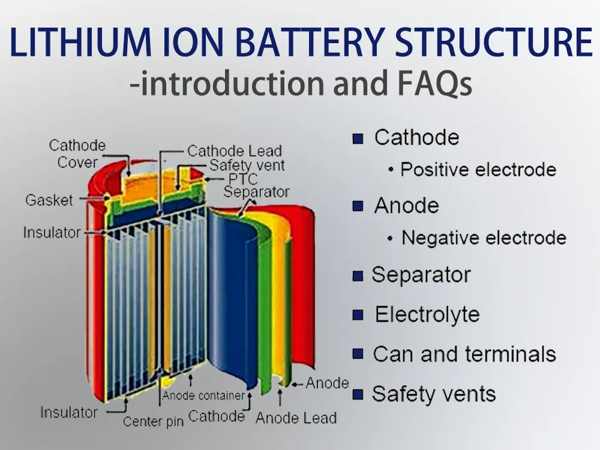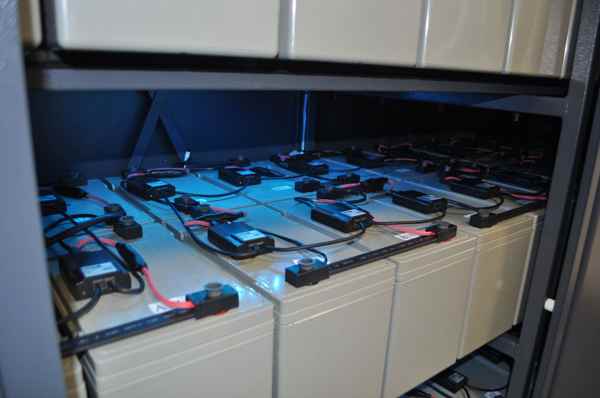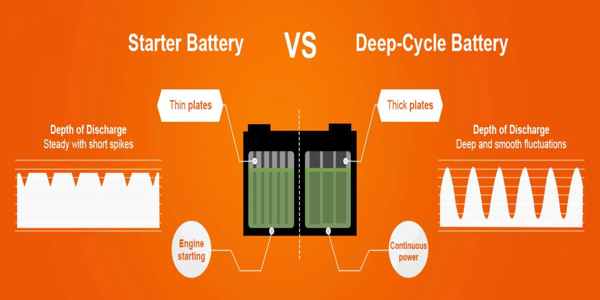Jakie bateria można zamontować na boku?
Podczas projektowania systemu magazynowania energii dla domu lub firmy, Przestrzeń jest często głównym problemem. Być może zastanawiasz się, „Czy muszę poświęcić cenną przestrzeń podłogową na nieporęczną baterię, czy akumulatory mogą być zamontowane w różnych pozycjach, jak na boku lub pionowo na ścianie?" Odpowiedź zależy całkowicie od technologii baterii, A nowoczesne rozwiązania oferują niesamowitą elastyczność.
Wspaniałą wiadomością jest to, że większość nowoczesnych zapieczętowanych baterii można bezpiecznie zamontować w dowolnej pozycji. Obejmuje to zapieczętowane typy kwasu ołowiu, takie jak AGM i żel, a zwłaszcza baterie litowo-jonowe. Ta wszechstronność jest kluczową cechą eleganckich montowanych na ścianie systemów baterii popularnych. Jednym typem, którego absolutnie nie można zamontować na boku, jest tradycyjna zalana bateria kwasowa ołowiu, jak rozlewa się jego ciekł.

Na Gycx Solar, Podstawową częścią naszego procesu projektowania jest tworzenie systemów, które są nie tylko potężne, ale także bezproblemowo i wydajnie integrują się z przestrzeniami naszych klientów. Zdolność nowoczesnych baterii litowych do montażu na ścianie jest doskonałym przykładem tego. Zbadajmy pytania dotyczące montażu i innych najlepszych praktyk baterii.
Czy można położyć baterię litową na boku?
Rozważasz potężną i wydajną baterię litową dla potrzeb energetycznych i chcesz ją zainstalować w sposób, który najlepiej pasuje do Twojej przestrzeni. Więc, Czy w rzeczywistości można bezpiecznie położyć baterię litową na boku lub zamontować ją pionowo?
Tak, Złożenie uszczelnionego akumulatora litowo-jonowego jest całkowicie w porządku. Zdecydowana większość akumulatorów litowych wykorzystywanych do magazynowania energii, szczególnie fosforan żelaza litu (LFP) Chemia występująca w systemach wysokiej jakości, Użyj unieruchomionego elektrolitu (Albo żelowa substancja lub materiały trzymane w woreczku lub komórkach pryzmatycznych). W środku nie ma swobodnego płynu, który mógłby wyciekać lub rozlać. Właśnie dlatego współczesne bateria montowana na ścianie Produkty są zaprojektowane do instalowania pionowo na ścianie, Oszczędzanie ogromnych ilości przestrzeni podłogowej.

Nurkuj głębiej: Zaleta projektu odpornego na rozlanie
Możliwość zamontowania baterii litowej w dowolnej pozycji jest znaczącą przewagą w stosunku do starszych technologii akumulatorów.
- Nauka w środku: W przeciwieństwie do tradycyjnej baterii samochodowej lub zalanej akumulatorów głęboko cyklu, który trzyma ciekły kwas siarkowy wystający wokół płyt ołowiowych, Zapieczętowany pakiet akumulatora litowo-jonowy zawiera ogniwa, w których elektrolit jest albo polimerem, Chodź, lub jest w pełni wchłaniany w materiał separatora. Wszystkie elementy wewnętrzne są bezpiecznie ustalone.
- Inżynieria elastyczności: Producenci zaprojektują te pakiety baterii, aby były solidne. Komórki wewnętrzne są szczelnie upakowane i zabezpieczone w trwałej obudowie. Oznacza to, że grawitacja nie ma negatywnego wpływu na ich wydajność lub bezpieczeństwo, niezależnie od ich orientacji.
- Ostateczny przykład: Baterie montowane na ścianie: Produkty takie jak Tesla Powerwall, Enfaza encarge, i różne montowane na ścianie LFP Bess (System magazynowania energii akumulatorowej) Rozwiązania, które oferuje GYCX Solar, są ostatecznym wyrazem tej korzyści. Cały ich projekt, Od struktury wewnętrznej po zewnętrzne wsporniki montażowe, jest zoptymalizowany pod kątem bezpiecznego, pionowy, Instalacja montowana na ścianie.
- Jedyny wyjątek: Zalany kwas ołowiowy: Warto powtórzyć, że taka elastyczność nie Zastosuj do tradycyjnych zalanych akumulatorów ołowiowych. Te muszą zawsze być pionowo, aby zapobiec wysoce żrący kwas ciekł, co spowodowałoby poważne uszkodzenia i spowodowałoby poważne zagrożenie bezpieczeństwa.
Ta rosnąca wolność daje nam, jako instalatorzy, Ogromna elastyczność w projektowaniu systemu, który jest nie tylko potężny, ale także estetyczny i ekscytujący dla twojego domu lub firmy.
Czy akumulatory litowo-jonowe muszą być wyprostowane?
Zajmijmy się tym wspólnym pytaniem. Wielu z nas dorastało z zasadą, że wszystkie baterie muszą być utrzymywane w pozycji wyprostowanej. Czy ta stara zasada dotyczy zaawansowanych baterii litowo-jonowych, które zasilają wszystko, od naszych telefonów po nasze domy?
NIE, Nowoczesne zapieczętowane akumulatory litowo-jonowe nie muszą być utrzymywane w pozycji pionowej. Jak omówiliśmy, Ich solidna lub żelowa konstrukcja wewnętrzna sprawia, że są odporne na rozlanie i niezależne od pozycji. Ta wolność od ograniczeń orientacyjnych jest główną przewagą technologiczną w stosunku do ich zalewanych poprzedników ołowiowych i jest kluczowym czynnikiem umożliwiającym innowacyjne projekty produktów, takie jak Compact, bateria montowana na ścianie systemy.

Nurkuj głębiej: Uwolnienie się od starych zasad baterii
„Musi być wyprostowany" Zasada jest zatrzymaniem się od starej technologii akumulatorów. Oto pomocny sposób pomyślenia o różnicy:
- Zalane akumulatory kwasu ołowiu są jak otwarta filiżanka wody: Jeśli to napiwasz, płyn się rozlewa. Wewnętrzne płytki ołowiowe muszą być stale zanurzone w ciekłym elektrolicie, aby działać, A górna część musi być otwarta (z czapkami wentylacyjnymi) Aby umożliwić ucieczkę gazów podczas ładowania.
- Zapieczętowane akumulatory litowo-jonowe są jak uszczelnione, Nowoczesna butelka z wodą: Możesz go odwrócić do góry nogami lub na boki, I nic nie wycieka. Komponenty przechowywania energii są samodzielne i nie polegają na swobodnym płynie.
Chociaż można je bezpiecznie zamontować w dowolnej orientacji, Zawsze sprawdzaj podręcznik instalacji producenta. W niektórych rzadkich przypadkach, producent może zalecić „preferowane" Orientacja dla optymalnego rozpraszania ciepła poprzez chłodzenie płetw lub otworów wentylacyjnych zaprojektowanych w obudowie. Jednakże, dla większości wysokiej jakości uszczelnionych akumulatorów litowych, Każda orientacja jest dopuszczalna. Ta wszechstronność pozwala nam w GYCX Solar na projektowanie niezwykle czystych i zintegrowanych systemów, Odzyskiwanie cennej przestrzeni podłogowej dla naszych klientów za pomocą eleganckich roztworów akumulatorowych montowanych na ścianie lub kompaktowych stojaków.
Czego nie robić z akumulatorem głębokim cyklu?
Zainwestowałeś w głębokie baterię cyklu, który jest zaprojektowany w celu zapewnienia stałej mocy przez długi czas. Aby chronić tę inwestycję i uzyskać maksymalną żywotność, Ważne jest, aby wiedzieć, jakiego powszechnego błędów należy unikać.
Jest kilka kluczowych rzeczy, które powinieneś nie zrobić z dowolnym akumulatorem głębokim cyklu, czy to lit, czy ołowiowy kwas. Nigdy nie pozwól mu siedzieć przez długi czas po całkowitym zwolnieniu, ponieważ może to powodować nieodwracalne uszkodzenia. Nigdy nie używaj niepoprawnej lub niezgodnej ładowarki, Ponieważ przeładowanie może zniszczyć baterię. Nigdy nie narażaj go na ekstremalne ciepło, który przyspiesza starzenie się. Oraz w szczególności dla zalewanych typów kwasu ołowiu, Nigdy nie zaniedbuj sprawdzania poziomu wody.

Nurkuj głębiej: Lista kontrolna do pielęgnacji baterii
Oto kluczowe „zakaz" za zapewnienie długiej i zdrowej żywotności dla twojego głębokiego baterii cyklu:
- Nie zostawiaj tego martwego: To jest zabójca baterii. Do baterii ołowiowych, Pozostawienie ich w stanie wypisanym powoduje tworzenie się na płytkach twardych kryształów siarczanu (siarczanie), który dusi zdolność baterii do zaakceptowania ładowania. Do baterii litowych, Zwolnienie do prawdziwego napięcia zerowego może powodować uszkodzenia wewnętrzne. Zawsze naładuj baterię tak szybko, jak to możliwe po głębokim rozładowaniu.
- Nie używaj niewłaściwej ładowarki: Jest to szczególnie ważne dla akumulatorów uszczelnionych, takich jak żel i lit. Każda chemia baterii ma określone napięcie i prąd potrzebny do bezpiecznego i skutecznego ładowania. Używanie ładowarki zaprojektowanej do standardowej baterii samochodowej na głębokim cyklu LFP lub baterii żelowej to przepis na katastrofę. W Gycx Solar, Zapewniamy, że kontroler ładowania słonecznego jest idealnie zaprogramowany dla określonej instalowanej technologii akumulatorów.
- Nie ignoruj temperatury: Ciepło jest największym wrogiem życia akumulatora. Na każde 10 ° C wzrost średniej temperatury roboczej powyżej 25 ° C (77° F), Żywotność baterii można przeciąć na pół. Jest to szczególnie ważne na gorąco, wilgotny klimat Singapuru. Zainstaluj baterie w najfajniejszych, Najbardziej dobrze wentylowana lokalizacja, i z bezpośredniego światła słonecznego.
- Nie stale spuszczaj go, aby opróżnić (Jeśli można go uniknąć): Podczas gdy są „głębokimi cykl," Wszystkie baterie trwają dłużej, jeżeli są poddane płytszym cykli. Jeśli regularnie używasz tylko 50% pojemności baterii zamiast 90%, Otrzymasz znacznie więcej cykli ładowania w ciągu swojego życia. Właściwe rozmiar systemu pomaga uniknąć tego stresu.
- Nie mieszaj starych i nowych baterii: Podczas budowania banku baterii, Nigdy nie mieszaj akumulatorów w różnym wieku, zdolności, lub typy w tym samym ciągu. Słabsze baterie przeciągną w dół silniejszych, prowadząc do niezrównoważonego i gorszych systemu, który zawodzi przedwcześnie.
- Nie zaniedbuj konserwacji (do zalanego kwasu ołowiu): Jeśli zdecydujesz się na niższy koszt akumulatorów FLA, Musisz zobowiązać się do regularnego sprawdzania i uzupełniania poziomów elektrolitu wodą destylowaną. Zapominanie, że jest to najczęstszy powód, dla którego zawodzą. Jest to kluczowy obszar, w którym zapieczętowany lit, żel, lub akumulatory AGM oferują ogromną przewagę.
Co to jest wadą korzystania z akumulatorów cyklu głębokiego?
Akumulatory głębokich cyklu to roboty magazynowania energii, zaprojektowany do rozładowywania i wielokrotnego ładowania. Ale jakie są nieodłączne kompromisy lub wady, o których powinieneś być świadomy przy wyborze jednego?
Kluczowy minus wielu tradycyjnych akumulatorów głębokich, zwłaszcza typy ołowiu (Zalane, AGM, Żel), jest ich Ograniczone życie cyklu W porównaniu z nowoczesnymi opcjami litowymi. Są też bardzo ciężkie i nieporęczne dla ilości energii, którą przechowują (Niska gęstość energii), I mają Niższa wydajność w obie strony, Oznacza to, że więcej energii jest marnowane podczas ładowania i rozładowywania.

Nurkuj głębiej: Kompromisy technologii głębokiego cyklu
Spójrzmy na wady, szczególnie podczas porównywania tradycyjnych akumulatorów głębokich cyklu ołowiu z nowoczesnymi roztworami litowymi, takimi jak te, gycx solar, specjalizuje się w:
- Ograniczone życie cyklu: Bateria o powierzchni ołowiu głębokiego cyklu może być oceniana 300-1,000 cykle. Wysokiej jakości fosforan żelaza litowego (LFP) Bateria głębokiego cyklu, w przeciwieństwie do tego, jest zwykle oceniany dla 3,000 Do 6,000+ cykle. Dla układu słonecznego, który codziennie jeździ, jest to różnica między wymianą baterii każdego 3-5 lata kontra posiadanie ich ostatnich 10-20 lata.
- Waga i rozmiar (Niska gęstość energii): Ołowiana kwas jest niesamowicie ciężki. Bank baterii ołowiowy zapewniający 10 kWh użytecznej energii może ważyć kilkaset kilogramów. Nowoczesny system litowy LFP, jak a bateria montowana na ścianie, Zapewnienie tej samej energii byłoby znacznie lżejsze i bardziej kompaktowe.
- Niższa pojemność użyteczna (Głębokość rozładowania - DoD): Aby zachować żywotność akumulatora ołowiu, Zasadniczo zaleca się, aby nie rozładowywać tego więcej niż 50%. Oznacza to, że akumulator kwasu ołowiu 10 kWh zapewnia tylko 5 kWh użytecznej energii. Bateria litowa LFP można zazwyczaj rozładować 90-100%, Tak więc bateria 10 kWh LFP zapewnia 9-10 kWh użytecznej energii. Musisz kupić znacznie większy bank ołowiowy, aby uzyskać taką samą energię, jak mniejszy lit.
- Niższa wydajność: Wokół jest wydajność w obie strony akumulatorów ołowiowych 80-85%. To oznacza dla każdego 100 Watts of Solar Power, które wkładasz, Dostajesz tylko 80-85 Watts z powrotem. Baterie LFP są znacznie bardziej wydajne, wokół 95% lub lepiej.
- Wymagania dotyczące konserwacji (do zalanego kwasu ołowiu): Jak omówiono, Baterie FLA wymagają regularnych, praktyczna konserwacja, co jest znaczącym minusem operacyjnym.
Gycx Solar Story: „Często klienci pytają, czy mogą zaoszczędzić pieniądze za pomocą tradycyjnych akumulatorów głębokich cyklu. Pokazujemy im długoterminową matematykę: podczas gdy koszt naszego z góry LFP1. Systemy zamontowane na ścianie są wyższe, Nie musisz ich wymieniać 2 Lub 3 razy w tym samym okresie, I zyskujesz bardziej użyteczną energię i wydajność każdego dnia. Wartość życia jest prawie zawsze znacznie lepsza."
Zdolność do montażu nowoczesnych baterii litowych w dowolnej pozycji jest potężną przewagą, Włączanie czystości, Ratunkowe projekty dzisiejszych montowanych na ścianie systemów magazynowania energii. Rozumiejąc najlepsze praktyki ich opieki i uznanie kompromisów w porównaniu ze starszymi technologiami głębokich cyklu, Możesz podjąć naprawdę świadomą decyzję.
W Gycx Solar, Nasza wiedza polega na projektowaniu systemów, które wykorzystują mocne strony najlepszej dostępnej technologii. Jeśli masz pytania dotyczące naszych roztworów baterii zamontowanych na ścianie lub innych opcji magazynowania energii, Zachęcamy do skontaktowania się z nami w celu uzyskania profesjonalnej porady.
Zrozumienie koncepcji LFP pomoże Ci lepiej porównać i zrozumieć koncepcje danych związanych z baterią. Pomoże to wybrać produkt, który najlepiej odpowiada Twoim potrzebom od naszej firmy. ↩
